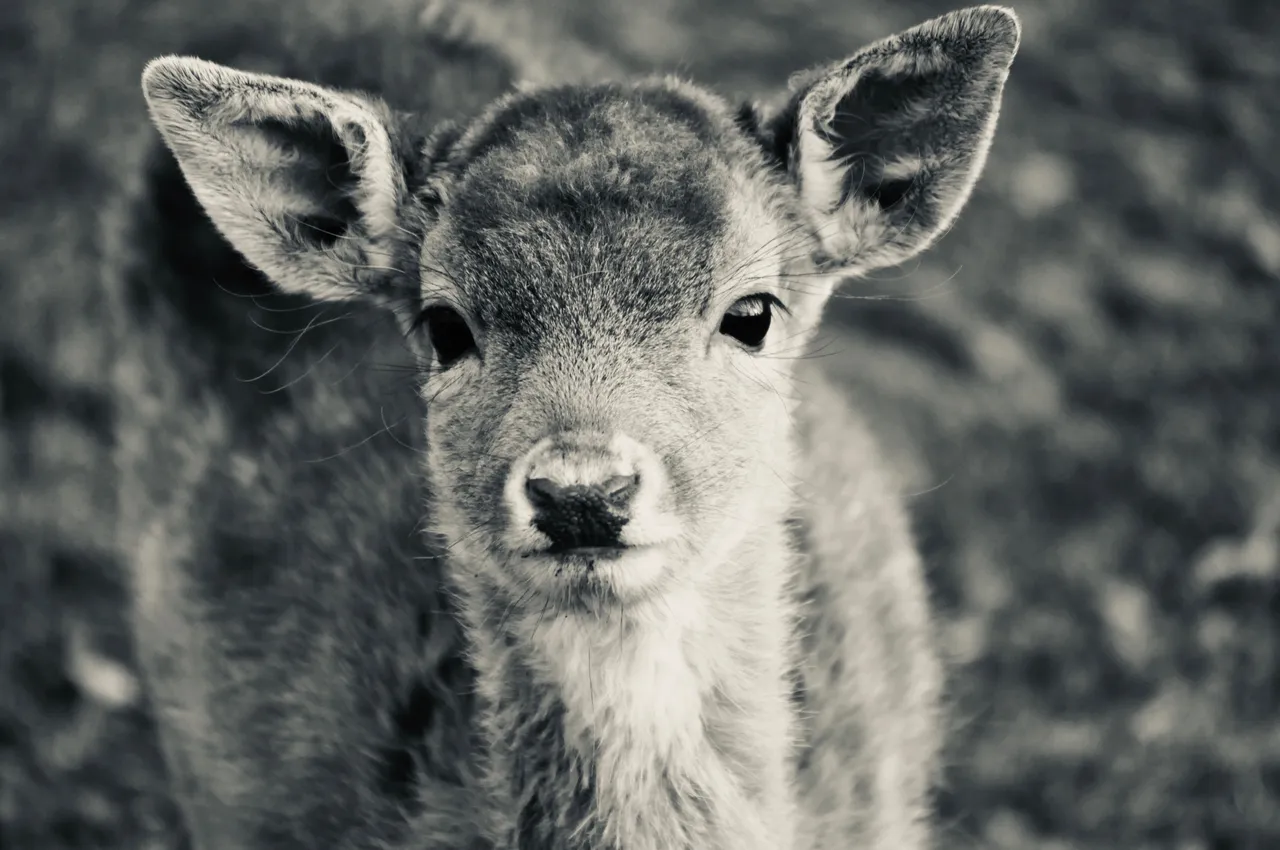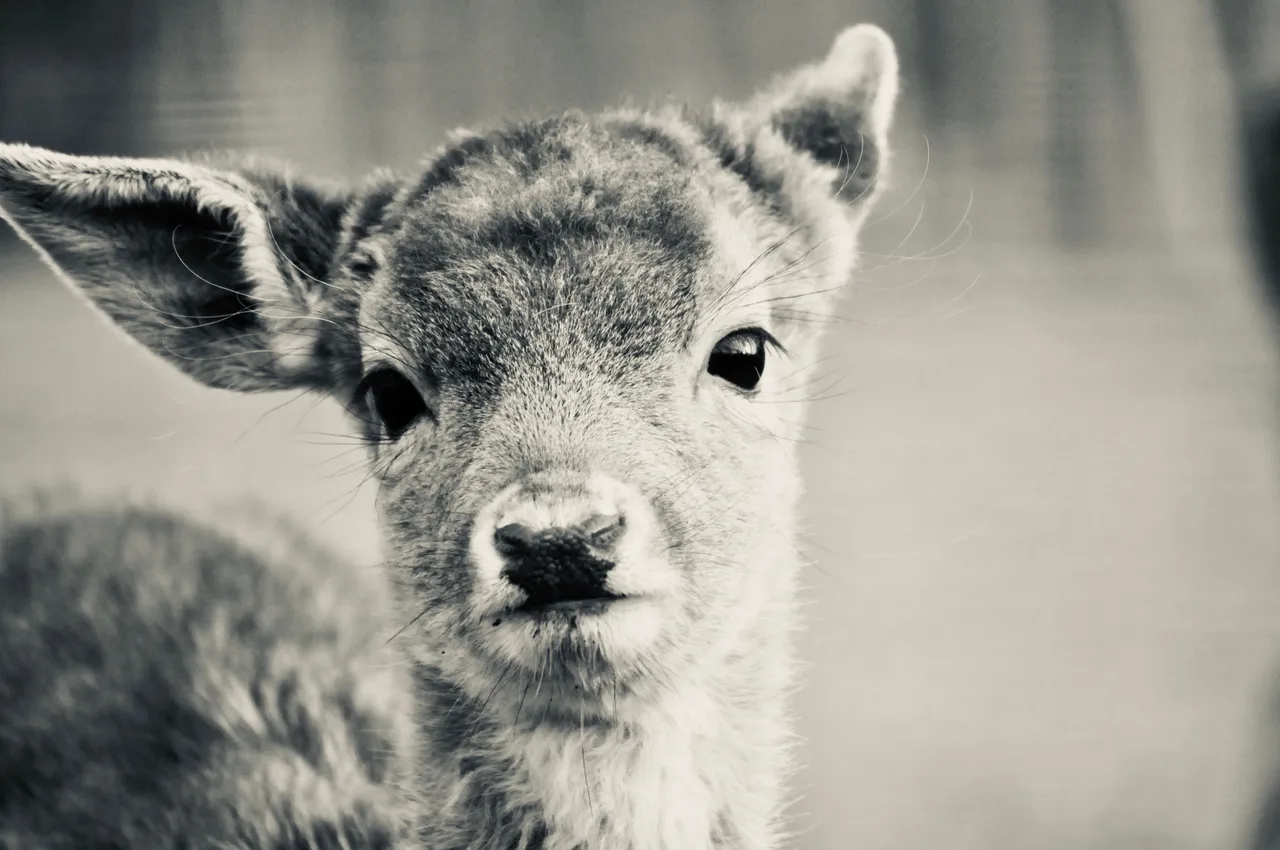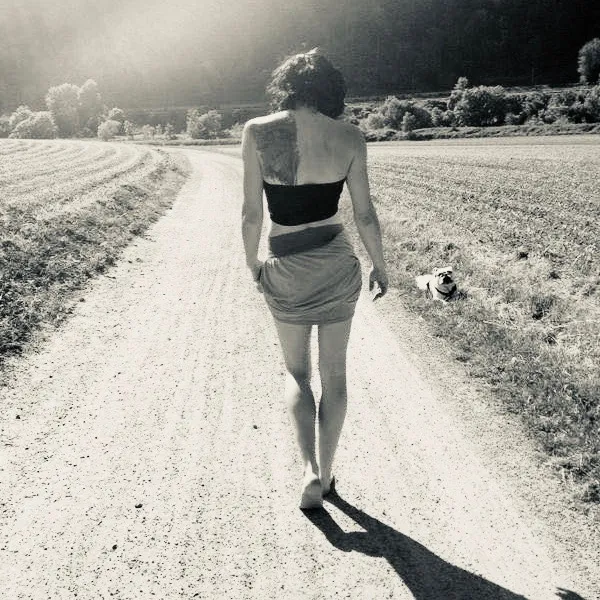Accompanying my Wildlife Tracker Story I want to share these facts and pictures with you.
Roe deer (Capreolus capreolus)
Fawns are cute little things. They are born usually between May and June after being carried by the doe for about 41 weeks.
Note that roe deer is one of the few animals going through an Embryonic diapause.

After birth the fawn is up and walking within the first 3 hours. The doe only stays with the fawn while lactating and cleaning it.
After that she wanders off to protect her youngsters from predators. She would not only be visible, but smellable, as the hunkered down fawns are yet odorless and therefor less detectable.
Predators would be wild boars, foxes and even corvids, as they pick out the eyes of fawns.
Note that does do not feed their fawns when people or dogs are around, so between May and July be extra careful.

If you see a fawn by itself, don't consider it lost. In most cases it is just natural.
The doe is communicating from the distance by callings. In the first two weeks a fawn is instinctively hunkering down and after that its flight behavior kicks in.
This is a nice example of the whole calling procedure by redfoxredfoxck found on YouTube.
Spoiler alert: Happy ending at 2.54 ;)
When is a fawn in need of help?
If you hear a fawn calling for a long time it might be abandoned. A doe wouldn't let her fawn call constantly as she would let it give away its position.
It could be that the doe was killed in a car accident. Everyone can detect if the teats are swollen, so in case you find an injured or killed doe check the teats. If you think she might have fawns check the surroundings for calling noises or randomly wandering fawns.
Note that if you find an injured deer or fawn it might be graphic. Young fawns often get run over by tractors or reaping machines when hunkering down in fields. They often loose their limbs.
If you find one inform your local hunter, wildlife sanctuary or veterinarian.
On that occasion I want to mention @antoniojoseha who is a Veterinary Student among us.
Scan of an ultrasonogram of pregnant European Roe deer, provided by Dobro Hrumvane Veterinary Clinic and The Wild Animals Foundation, Sofia, Bulgaria, Public Domain https://commons.wikimedia.org/w/index.php?curid=56187502


Classifications
Common name Binomial name Class Roe deer Capreolus capreolus Mammalia
Welcome to Annas world. She is a studied animal psychologist and has a broad interest in nature and questions about being. She is an autodidact that loves to explore and has a good portion of humor. Join her for interesting stories, fascinating photos and facts about dogs and nature. If you like her content, don't forget to upvote and leave a comment to show some love. Feel free to reblog and don't forget to follow @bulldog-joy to be up to date with her latest posts.
Range of Roe deer
Europe https://commons.wikimedia.org/w/index.php?curid=752835

